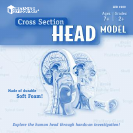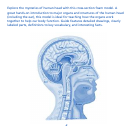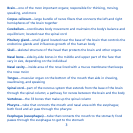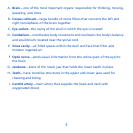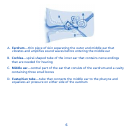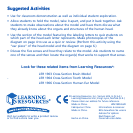
Brain—one of the most important organs; responsible for thinking, moving,
speaking, and more
Corpus callosum—large bundle of nerve fibers that connects the left and right
hemispheres of the brain together
Cerebellum—coordinates body movement and maintains the body’s balance and
equilibrium; located near the spinal cord
Pituitary gland—small gland located near the base of the brain that controls the
endocrine glands and influences growth of the human body
Skull—skeletal structure of the head that protects the brain and other organs
Nasal bone—side-by-side bones in the middle and upper part of the face that
vary in size, depending on the individual
Nasal cavity—inside area of the nose lined with a mucus membrane that keeps
the nose moist
Tongue—muscular organ on the bottom of the mouth that aids in chewing,
swallowing, and speaking
Spinal cord—
part of the nervous system that extends from the base of the brain
through the spinal column; a pathway for nerves between the brain and the body
Vertebrae—the 33 bones that make up the spinal column
Pharynx—tube that connects the mouth and nasal area with the esophagus;
both food and air pass through the pharynx
Esophagus (oesophagus)—tube that connects the mouth to the stomach; food
passes through the esophagus to get to the stomach
3



